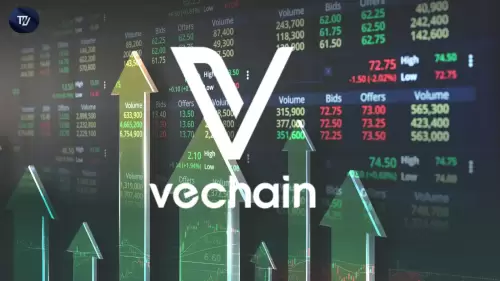Exploring the intersection of crypto, AI training, and decentralization: from data sourcing to regulatory frameworks, and Huawei's AI advancements.
Crypto, AI Training, and Decentralization: A New Era?
The convergence of crypto, AI training, and decentralization is creating ripples across industries. Let's dive into the latest developments.
Decentralized Data for AI: The New Gold Rush
The AI world is facing a data drought. Forget compute power; high-quality, legally compliant data is the new bottleneck. Poseidon, backed by a16z Crypto, is tackling this head-on with a decentralized data layer. Their $15 million seed funding aims to solve the scarcity of IP-cleared training data, especially crucial for fields like robotics and spatial computing. Poseidon uses decentralized infrastructure to legally source and distribute data sets, ensuring traceability and monetization for contributors. This decentralized approach may be the only way to efficiently orchestrate the data creation and curation needed at scale. The early wave of AI models thrived on easily accessible online data, but that era is over. Now, the challenge is coordination: thousands of contributors must work together to source, label, and maintain the physical data that next-gen AI needs.
India's Crypto Regulation: A Balanced Approach?
India is stepping up its crypto game with the proposed COINS Act. This model law seeks to balance innovation with oversight, focusing on digital asset rights and establishing clear regulations. A key aspect is the emphasis on "crypto-native constitutional rights," like self-custody and financial privacy. The Act proposes a new regulatory body, the Crypto Assets Regulatory Authority (CARA), to oversee crypto activities. While centralized exchanges would face strict licensing, decentralized protocols would have a lighter disclosure regime. The plan also includes a "safe harbor" for Indian ICOs and a Strategic Bitcoin & Crypto-asset Reserve, positioning India as a strong player in the global crypto market.
Huawei's AI Breakthrough: AsyncFlow
Huawei is making waves with AsyncFlow, an AI training framework designed to dramatically improve the speed and scalability of post-training processes for large language models (LLMs). AsyncFlow introduces an asynchronous streaming reinforcement learning architecture, overcoming limitations of traditional methods. At its core is TransferQueue, a distributed data management module that balances workloads and allows overlapping of processing stages. This results in significant throughput gains, potentially leading to substantial savings in time and infrastructure costs. Industries like healthcare, finance, and autonomous driving could see direct performance enhancements. Huawei's broader AI strategy also includes open-sourcing its programming language, Cangjie, reducing reliance on foreign technology and building a homegrown ecosystem.
Tether's Enforcement Role: A Double-Edged Sword
Tether, the issuer of USDT, has been actively freezing funds linked to illicit activity, collaborating with law enforcement. While this demonstrates a commitment to combating financial crime, it also raises concerns about centralization. Critics argue that such actions could undermine the core crypto values of financial sovereignty and decentralization, potentially resembling a central bank digital currency (CBDC). However, others argue that centralized control can be beneficial in certain situations, such as recovering stolen funds. Tether has frozen over $2.5 billion in USDt linked to illicit activity and has blocked more than 2,090 wallets in cooperation with global authorities. This power to freeze user funds sparks debate within the crypto community.
Personal Thoughts
The intersection of crypto, AI, and decentralization is a complex and evolving landscape. While decentralized solutions like Poseidon offer promising ways to source high-quality AI training data, regulatory frameworks like India's COINS Act are crucial for fostering responsible innovation. Huawei's AI advancements demonstrate the potential for cutting-edge technology, but the centralized control exhibited by entities like Tether raises important questions about the future of crypto and decentralization. For instance, Tether's ability to freeze funds, while helpful in some cases, underscores the lack of true decentralization in many stablecoins. This suggests that while the crypto world aims for decentralization, real-world compliance and security needs often necessitate centralized control.
Wrapping Up
So, what's the takeaway? The crypto, AI, and decentralization trifecta is full of potential, but also presents challenges. It's a wild ride, but hey, at least it's never boring!












































































